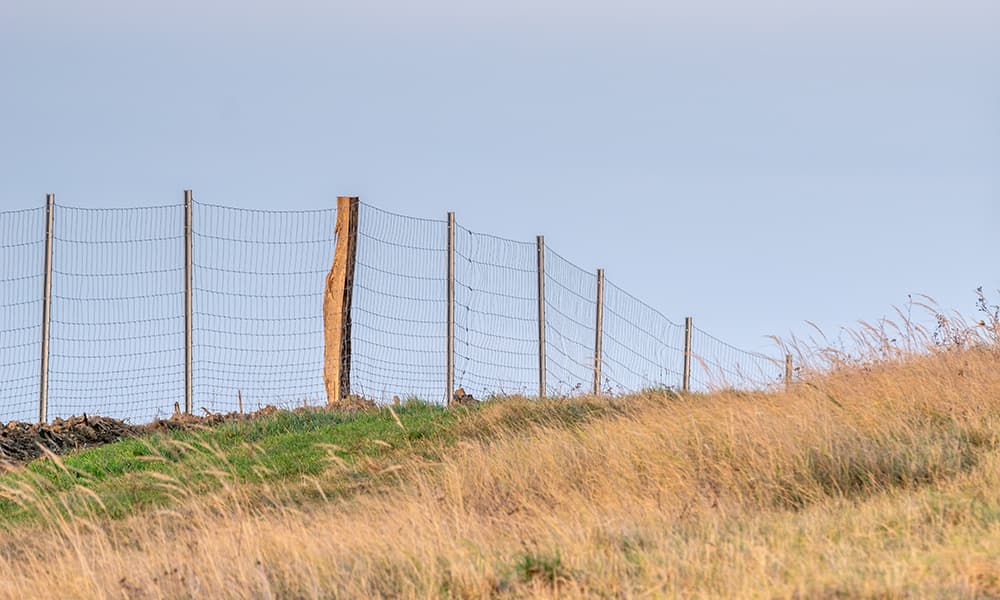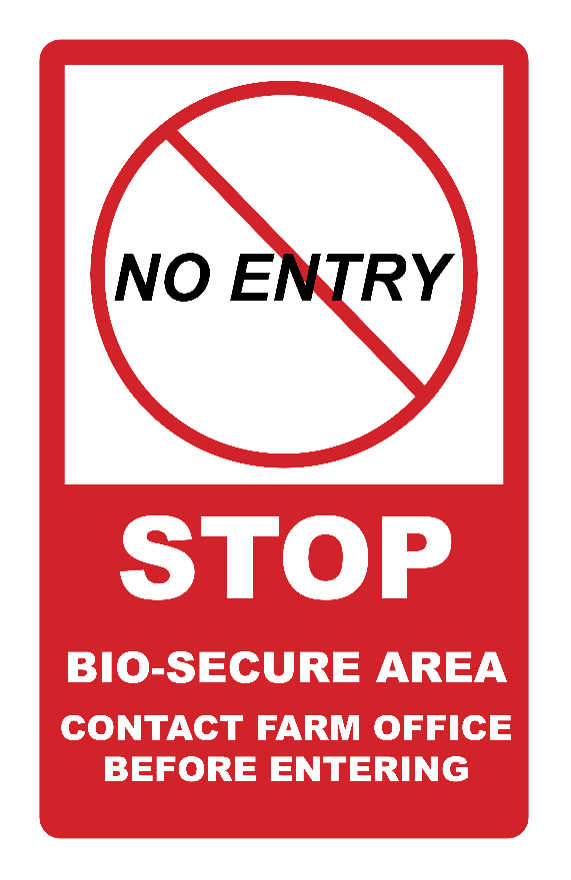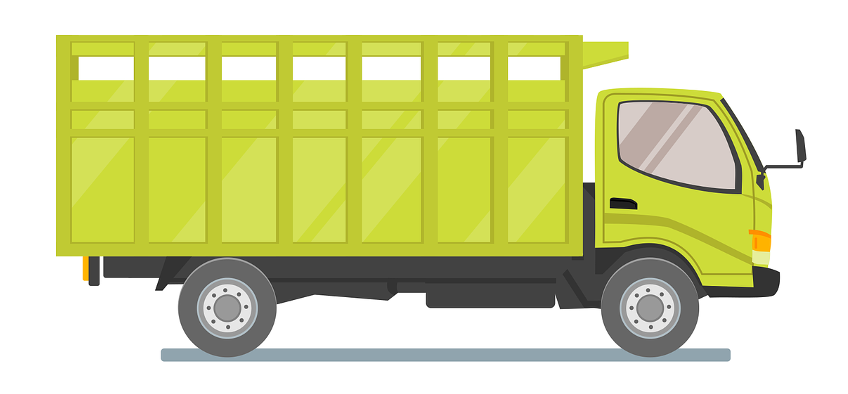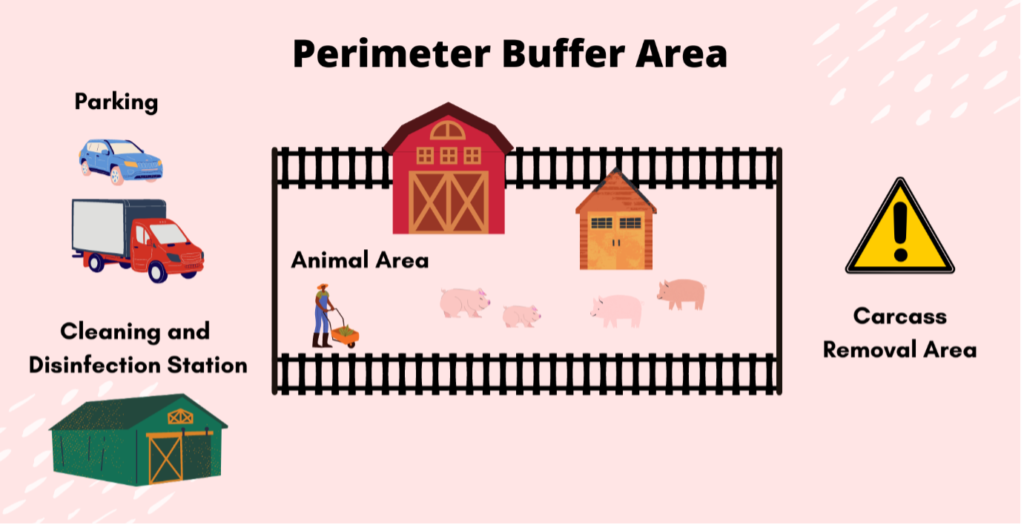Biosecurity Practices
Build a structure of security to protect your herd
There are numerous structures that you can construct on your farm to have robust biosecurity. Through this module let us look at some common structures found on a high biosecurity farm.
Gates and fences are the first point of entry and an essential barrier for pasture rearing, alternative production, or semi-open and open housing systems to protect pigs from wild animals, especially wild boars, which carry illnesses that can transfer to pigs. Fences are unnecessary for farms that follow an intensive rearing or closed housing system.
Gates are another simple barrier that can prevent entry of unauthorized visitors and vehicles. Humans and transport vehicles can easily transmit diseases, so farms should use a logbook to track everyone entering the farm premises, including employees, feed trucks, and farm visitors. This makes it easier to trace a disease outbreak back to the source while also controlling the number of people entering the farm in a day.


Signs are an inexpensive way to make visitors aware of farm rules and biosecurity practices. Signs on the fences or farm entrance guide visitors to the appropriate areas and help prevent unauthorized entry.
Effective signage should be written in a professional, legible, and clear format to emphasize the farm’s commitment to biosecurity. Signs should be visible to all passers-by beginning at the road to prevent accidental entry. They can be hung off a poll or barriers placed at the farm entrance and should be sturdy to withstand the elements. These signs can also be placed within the farm premises to direct and guide employees and visitors.
Designated parking space away from pig housing is an important structural component for large farms or production units, while also serving small farms to prevent vehicles from introducing diseases.
Vehicles known to be contaminated, like carcass disposal trucks, should be given a separate path to travel every time they leave and enter the farm premises to avoid any type of cross contamination between vehicles.
The parking area should also be away from the feed storage unit in the farm to avoid feed contamination. The feed trucks should have a designated path to the feed storage unit for feed delivery. Trucks entering the parking area should be clean and free from any visible dirt, manure, or dust, especially on the tires.
Biosecurity rules for parking areas may vary depending on farm and production size, but the basic cleaning and disinfection standards should be followed. Tire dips filled with a disinfectant solution (changed frequently) are cost effective and easy to install for small farms. The dips should also be deep enough to adequately cleanse the tires.

Ensure incoming trucks tires are cleaned before entering the farm.
A perimeter buffer area (PBA) is an outer control boundary set up around the farm buildings to minimize potential disease introduction near animal housing. An ideal set-up ensures caretakers can perform their daily tasks while routine deliveries occur outside the area. The biosecurity plan must clearly mark the entire PBA boundary, but especially around animal buildings.
All dirty vehicles and equipment should avoid the PBA. It does not have to be elaborate but should be well-defined. All activities that do not fall under day-to-day farm activities – like a cleaning and disinfection station, parking area, and carcass disposal – should be outside the perimeter buffer area to minimize disease introduction within the farm. This can be set up in farm of any size and is essential for good farm biosecurity.

A PBA should be well-defined but can be as simple as fencing.
Points to remember while setting up a PBA:
- Large enough (buffer zone around animal housing)
- Small enough (avoid unnecessary traffic through it)
- Shape varies between farms (site-specific)
- Designated entrance to direct traffic (access point)
- Entry to the PBA is restricted through controlled access points
- Exclude residence and non-applicable structures (e.g., machine shops)
- Apply visual indicators to define the perimeter buffer area demarcation (e.g., landscaping, tree lines, fencing, gravel, grass cutting, cropland)
- Each PBA access point needs to be clearly marked with a sign and protected with a suitable barrier (e.g., cable, gate, rope)
The line of separation (LOS) is a boundary between the animals and the outer surroundings. A line of separation can be in the form of building walls in a closed housing system or a fence in open or semi closed housing system. This prevents direct contact with the animals and helps in disease prevention.
Only authorised personnel wearing farm specific clothing should be allowed within the LOS. A cost-effective way to set this up for small farms is to make a fenced area around the animals and restrict entry of unauthorized people within that area.
Animals, people or items may only cross the LOS through clearly marked and controlled LOS access point(s) following appropriate biosecurity measures. LOS access point should be clearly marked with a sign in a language understood by all entering. All the movement (animals, equipment, people) across the LOS are recorded and available for review on request.
Operational biosecurity controls disease introduction and limits disease spreading within the farm. This is influenced by routine farm management practices. Operational biosecurity must be implemented at every stage of production, beginning from the day an animal enters the farm until after it leaves the premises for final sale.
Broadly, operational biosecurity has two parts:
- External biosecurity measures prevent diseases from entering the farm through incoming animals, visitors, vehicles, and equipment.
- Internal biosecurity prevents disease spreading within the farm (from sick to healthy animals) through the movement of animals, personnel, visitors, and equipment within the farm.
What’s Next?
We learned about numerous structures that can be set up on a swine farm. However, it is not essential to have all these structures for every farm. Some structures may not be required in certain situations. Consult a veterinarian or a biosecurity officer to identify which structures meet your farm’s needs.
